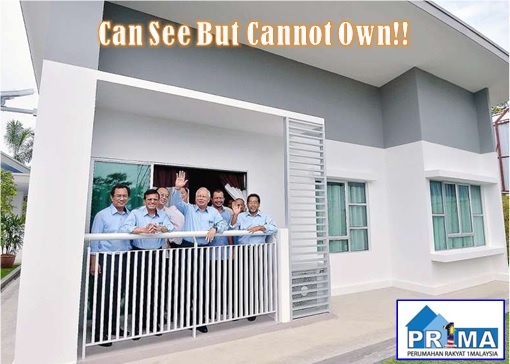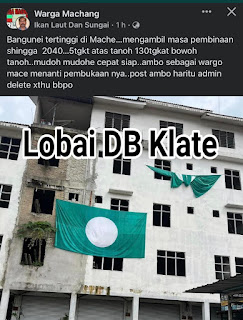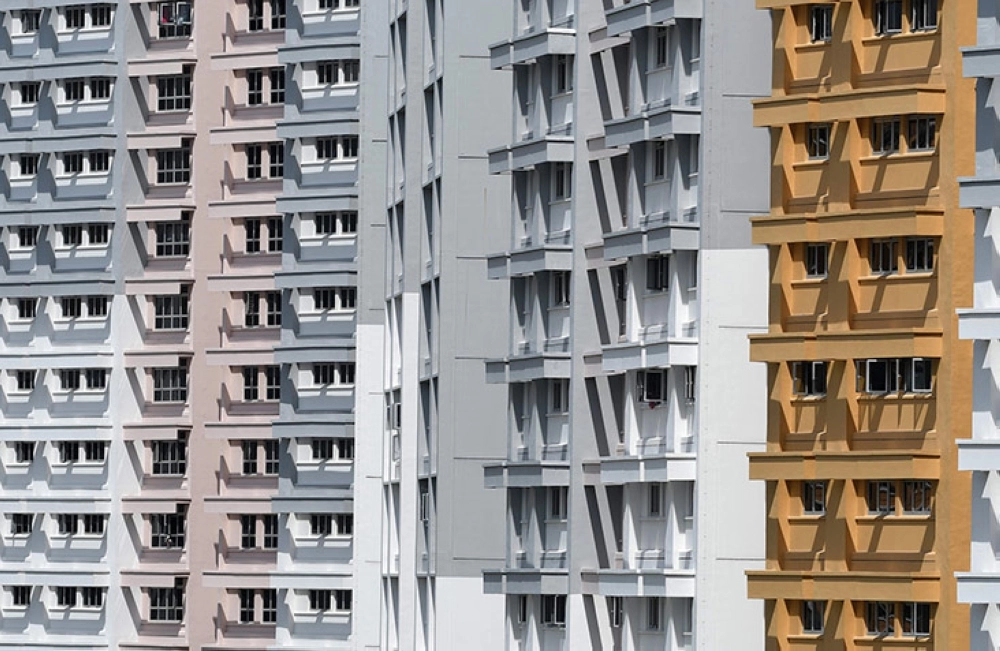For those who think Umno president Ahmad Zahid Hamidi is what Prime Minister Anwar Ibrahim needs for his coalition government’s survival, the sacking of Khairy Jamaluddin and suspension of Hishammuddin Hussein proves that Zahid may also destabilise the government and, in the worst case scenario, even cause its downfall.
The coalition government’s 148-seat two-thirds majority consists of three players: Pakatan Harapan’s 82 seats, BN (30), and the assorted Borneo parties’ 36 MP seats [GPS (23), GRS (6), Warisan (3), KDM (1), PBM (1) and independents (2)].
Technically, even if BN walks out, the coalition government still has 118 seats. But that would mean all three Malay-Muslim nationalist parties – PAS (43), Bersatu (31) and Umno’s (26) – are in the opposition, politically undermining the coalition government’s communal legitimacy.
Keeping Umno afloat is therefore important for Anwar’s government itself to stay afloat. It is fundamentally about wooing back the middle-ground Malay votes lost to PAS and Bersatu. How successful such an effort can be is the waiting test of the six-state midterm election, which can be as late as mid-August but is contemplated to be held in July or June.
Pre-empting a bottom-up challenge...
How can Umno rise from its ashes and make a comeback?
The first alternative is having a new leadership, new direction, and fresh narrative to instil interests and hopes amongst floating Malay voters. This means a reformed Umno without Zahid and its allegiance to Harapan is not personal but structural – being No 2 to Harapan is better than being No 3 to PAS and Bersatu.
The opposite alternative is uniting under the existing leadership and hoping to win over the sceptical fence-sitters with control and distribution of patronage as a government party. The no-contest resolution concerning the two top posts passed in Umno’s annual general assembly (AGM) on Jan 14 has largely closed the door on the first alternative.
However, if the undercurrent is strong, then Hishammuddin, Khairy, Shahril Hamdan Suffian, Noh Omar and others could have fought a campaign from the bottom-up to sweep through divisions, supreme council, Youth, Women and Puteri wings up to the three vice presidents.
This might leave Zahid and his deputy, Mohamad Hasan surrounded by their opponents in the supreme council. The sacking and suspension of Zahid’s main rivals are to ensure the door is firmly closed, not even mildly ajar.
Umno’s ‘slaughtering field’ in the upcoming state elections...
For the mid-term state elections, Zahid will put only his loyalists as candidates, effectively purging Khairy’s and Hishamuddin’s followers, repeating what he did to warlords like Noh, Annuar Musa, Shahidan Kassim, Zahidi Zainul Abidin and Mastura Mohd Yazid in GE15. Umno lost all the seats previously held by the dropped incumbents. How can Umno do better this time around when more got ousted?
Why would Umno members supporting the axed leaders, let alone middle-ground Malays tired of corruption, come out to vote for Umno in Harapan-controlled Selangor, Negeri Sembilan and Penang, not to mention the PN-PAS states of Kelantan, Terengganu and Kedah?
By getting rid of its own generals, Umno is heading towards its own “slaughtering field” in the mid-term state election. What is Umno’s weapon to fight? No ideology, no direction, no narrative, no political stars - all Umno has would be the government’s patronage and largesse.
For this reason, PAS may halt its negotiation with the three Harapan states for a coordinated mid-term election and go ahead with early dissolution of its three states to deliver an immediate blow on Umno.
If PAS president Abdul Hadi Awang’s admission on giving voters money has allowed Harapan and BN in the past weeks to challenge PN’s claim as clean and anti-corruption, Umno’s purging last night has let PAS out of the hook, not just in media attention, but likely also in the state polls with its own abuse of government resources.
Is Umno taking MCA’s path?...
More detrimental for Umno, using patronage power to swing middle-ground voters has sharply declined. Had it worked, today it would have been MCA holding 40 seats in parliament, not DAP. Umno strategists might even have overlooked a similarity between MCA’s and Umno’s electoral fortunes with a lag of 10 years. Is MCA’s today going to be Umno’s tomorrow?
MCA’s electoral gain halved in 2008, dropping from 31 parliamentary seats and 76 state seats in 2004 to 15 and 32, respectively. If the sharp drop was unexpected, its worse results in 2013 (dubbed 7-11, for winning only seven parliamentary seats and 11 state seats) and 2018 were no longer surprises.
As DAP and Harapan captured state governments and performed better, the MCA’s standard narrative – “vote us or you have no representatives in government” – simply collapsed, as many MCA loyalists shifted to be middle-ground voters, while some middle-ground voters further shifted to be DAP/Harapan loyalists.
If Umno’s 2018 defeat is comparable to MCA’s 2008, then Umno’s 2022 bigger setback resembles MCA’s 2013. If Umno continues to have only patronage to offer, then its GE16 might look like MCA’s 2018.
Where would Khairy and Hishammuddin go?...
How bad can Umno’s purging hurt the party and the coalition government may depend on how Khairy and Hishammuddin react.
Many Harapan supporters hope that Khairy – and his close associate Shahril - would join their ranks, especially PKR, as they appeal to a more urban, diverse, youthful and sophisticated segment of the electoral market.
If this happens, Umno and ex-Umno dissidents under Harapan ticket may take on each other in the state polls. Given the deep enmity, such contests are unlikely to be friendly matches and may destabilise Harapan-BN relationship at the federal level. But this would be a lesser worry.
The opposite scenario would be worse for Harapan – if Khairy and Shahril join Bersatu, they would carry more Malay middle-ground voters, especially youngsters, to PN.
What may deter this move is that many in Bersatu, from ex-Umno leader Hamzah Zainuddin to ex-libertarian Wan Saiful Wan Jan, may not like the competition.
Would Hishammuddin do a ‘Shahrir’?...
The biggest threat to Zahid now is Hishammuddin. Zahid spared him from sacking simply because the anti-hopping law would free him to join Bersatu. But a six-year suspension means that he is blocked from contesting in one to two cycles of general elections, effectively ending his political life.
Does Hishammuddin have the guts to leave the party and resign as MP to force a by-election, before or during Umno’s party election? Would Hishammuddin emulate what Johor Umno veteran Shahrir Abdul Samad did to former Umno president Dr Mahathir Mohamad back in 1986? At the time, Shahrir won the by-election hands down – which was a slap to Mahathir’s face.
If Hishammuddin resigns, he has two advantages in retaining the seat. First, he is the fifth-term MP for Sembrong since 2004, winning on a margin of 10,000 votes and above, except in 2018. Second, and most importantly, this would be the national battle between “Zahid’s Umno versus all anti-Zahid forces”. Khairy, Noh and others can campaign all out for Hishammuddin before deciding their next move.
PAS may expedite its state elections to synchronise with the by-election in Sembrong, so that Harapan-BN’s machinery would be stretched. In the event of Hishammuddin’s resounding victory, five other Umno MPs labelled as pro-PN, including former premier Ismail Sabri Yaakob and former Johor menteri besar Hasni Mohammad, may contemplate doing the same.
Can Anwar prevent the worst scenario after Umno’s night of the long knives? In any case, Umno’s implosion promises to steal all limelight from his nation-rebuilding project of Malaysia Madani just launched last week, and sink all his signalling of political stability to the business community. And it seems Anwar and his government are clearly the biggest collateral damage here. - Wong Chin Huat,mk
Building affordable homes – Even the UK learned from Singapore’s HDB public housing programme...
In 2022, more than 20,000 HDB flats were completed – the highest number in the last 5 years. It was a 50% increase as compared to 2021, meaning even during the Covid-19 pandemic, HDB managed to build 10,000 affordable homes. The Singapore’s Housing and Development Board (HDB) is targeting to complete another 20,000 flats across 22 housing projects in 2023.
HDB was so serious about providing quality and affordable homes for everyone that errant flat owners who did not live in their HDB flats during the 5-year MOP (minimum occupation period) would be punished. In general, flat owners are not allowed to sell or rent out their flat or invest in a private residential property during the MOP, which starts from the day of key collection.
The HDB conducts about 500 inspections each month to detect violations of housing rules such as illegal flat rentals. This is to prevent buyers from buying a BTO flat, but not for the purpose of living there. They are greedy owners who buy and sell it as “almost brand new” on the resale market for quick profits. Such owners could see their flats acquired by the board, fined up to S$50,000 or slapped with written warnings.
That’s because HDB flats in Singapore – the world’s most expensive cities to live in together with New York – are heavily subsidized. From time to time, the authorities would conduct spot checks on the physical flat itself, a review of records to prove flat occupation, and interviews with flat owners, property agents, buyers and even neighbours Therefore, only a handful dares to cheat.
Between 2017 and November 2022, 53 errant flat owners who did not live in their HDB flats during the MOP were taken to task – averaging 10 cheating cases per year. But the fact that they got caught anyway means the government takes the violation of house ownership rules very seriously. Its policy is to reinforce public housing as a home for the owners to live in, not to speculate.
However, the HDB flat, commonly referred as “government housing”, is more than just an affordable public housing system. Its primary objective is building cohesive communities to ensure its multi-racial, multi-cultural and multi-religious community co-exist and maintain racial harmony by providing living environments with community spaces for residents to mingle and interact.
So, when neighbouring Malaysia tries to engage experts from Singapore’s HDB to resolve the country’s endless housing issues, opposition Perikatan Nasional quickly spins and twists it into a racial issue. Initially, PAS Islamist party has falsely claimed that Malay reserve land would disappear after Local Government Minister Nga Kor Ming said he plans to consult Singapore
Then, the despicable PAS religious extremists started stirring up racial and religion sentiments among the Malays that their village could disappear. Now, in an attempt to provoke government servants, the racist bigots lied that Mr Nga, a DAP (Democratic Action Party) minister, is bringing experts from Singapore because the Malaysian civil service is inefficient in housing matters.
It’s not hard to understand the political motives of PAS extremists in criticizing the Pakatan Harapan-led unity government for the sake of criticizing. It has to keep promoting racist hatred, xenophobia, and all forms of bigotry because that’s the only way PAS can stay relevant. It would rather see Malays remain poor and unable to afford a home than to see HDB flats succeeded in Malaysia.
Yes, it would be disastrous for the Islamist party if Anwar administration, especially DAP, could fix the 60-year-old housing problems by replicating the successful housing model of HDB in the country. The Malays would start asking why the previous Barisan Nasional and Perikatan Nasional governments failed to solve housing problems that DAP Nga Kor Ming could easily fix.
Barisan Nasional, despite ruling for 61 years since independence in 1957, has failed to provide sufficient affordable homes. Perikatan Nasional did not even care about housing during its 33-month rule. According to real estate PropertyGuru, 51% of Malaysians do not qualify for the government’s affordable housing scheme and cannot afford to buy property without financial assistance.
Hassan Basri, who shared a 2-bedroom flat in Cheras, Kuala Lumpur, with his parents and an aunt since he finished school in 2005, is still living there in 2022. Having to sleep in the living area, the 34-year-old factory bus driver simply does not have enough money to support a family, let alone owning a home of his own. Stories like Hassan’s are aplenty.
Najib Razak -PRIMA Houses Can See But Cannot Own
Before former Prime Minister Najib Razak lost power in 2018, he proudly announced that his 1Malaysia Peoples’ Housing Scheme (PR1MA) has awarded more than RM15 billion worth of contracts to 574 Bumiputera firms. Overall, the PR1MA had given away a jaw-dropping RM22.4 billion worth of contracts to its business partners – comprising developers, contractors as well as vendors.
Heck, the ex-PM actually had promised to build 1-million affordable houses, including 500,000 units of PR1MA houses, after winning the 2013 General Election. Yet, despite his promise to build hundreds of thousands of affordable housing for the people – every year – the fact remains only 11,944 units of PR1MA homes had been completed and sold by November 2017.
Instead, Najib’s best friend – Jamaluddin Jarjis – believed to be the man behind PR1MA scheme became a billionaire. Known as JJ, Mr Jamaluddin’s wealth was exposed after his death in a helicopter crash in 2015, leading to family feud in court for his RM2.1 billion estate. As the chairman of PR1MA, JJ is believed to have had benefitted from the scheme through kickbacks.
According to Bank Negara Malaysia (Central Bank), the reason why Malaysians are unable to afford a home is not due to strict lending rules on housing loan. The real reason is because houses are not affordable to people like Hassan Basri. At the same time, crooks like former PM Najib and his cronies were scamming people and stealing money under the pretext of building affordable houses.
Exactly what PAS religious extremists had done to solve housing problems when they were the governing partner in the backdoor government of Perikatan Nasional for the last 33 months? They had done absolutely nothing except promoting racism and extremism, while talking about women and sex as well as demanding latest Mercedes Benz and marrying younger wives.
Even if it’s true that Local Government Minister Nga Kor Ming is seriously seeking the expertise of the Singapore’s Housing and Development Board to build more affordable homes, it’s better than doing nothing like the useless PAS. Besides, tapping the professional advice from the neighbour does not mean surrendering or sacrificing national sovereignty.
Just because the new government of Anwar Ibrahim is serious about building affordable housing, it does not necessarily mean Malaysia can clone Singapore’s housing strategy. Hong Kong has tried to learn – but failed to copy – Singapore’s housing policy. While Hong Kong’s land mass is larger than Singapore by around 400 sq km, each person in Hong Kong has less living space as compared to Singapore.
Malaysia Low Cost Flat
Essentially, Hong Kong is larger than Singapore by three times, and it has twice as many residents, but yet the residential land area in Hong Kong is much smaller. There’s no solution for Hong Kong’s housing problem primarily because only 44.8% of Hong Kongers live in public housing as compared to 80% Singaporeans. Housing is affordable in Singapore because they are public housing to begin with.
And because private housing typically costs twice as much as public housing, it’s not rocket science why Singapore does not face the same problem as Hong Kong. In Singapore, the government controls the housing. In Hong Kong, property developers control the real estate. The Singapore government’s policies of allowing retirement funds Central Provident Fund (CPF) to be used to purchase houses help tremendously.
Interestingly, before HDB was established in the1960s, its predecessor – Singapore Improvement Trust (SIT) – had built 20,907 units of public housing flats in the span of 12 years from 1947 to 1959. This means during British colonial rule, the public housing in Singapore was built in a similar fashion to the British public housing projects called “council housing”.
Yet, 100 years later, the UK social housing policy becomes a major challenge, plagued with problems of affordability and availability. Today, the British want to learn from the “Singapore model”, especially how the HDB housing is cleverly integrated into the existing urban infrastructure, including roads, public transport, schools and health services to produce more upmarket housing.
Malaysia has a bigger problem. There were at least 384 abandoned housing projects by the previous governments of Barisan Nasional and Perikatan Nasional. Another 129 “sick projects” have been identified as being delayed more than 30% behind schedule. In total, more than 500 projects worth billions of ringgit are stuck, which in turn affects thousands of house buyers.
The people, especially the Malays, have a choice. They can either continue to live with their parents like Hassan Basri, or they can ignore PAS extremists and bigots and adopt an open mind to the Singapore’s HDB model. There’s nothing wrong to learn from the experts. Nga Kor Ming has nothing to lose. He can easily let the public housing deteriorate, if that’s what the people radicalized by PAS wanted.
More importantly, PAS is afraid that if HDB can be replicated successfully, the government led by Pakatan Harapan could start building a multi-racial community that interacts with each other. It would be harder for the extremists to use “divide-and-rule” strategy for their selfish political gains. The HDB flats could be the game changer that could undermine the Islamist party. - FT
cheers.












No comments:
Post a Comment